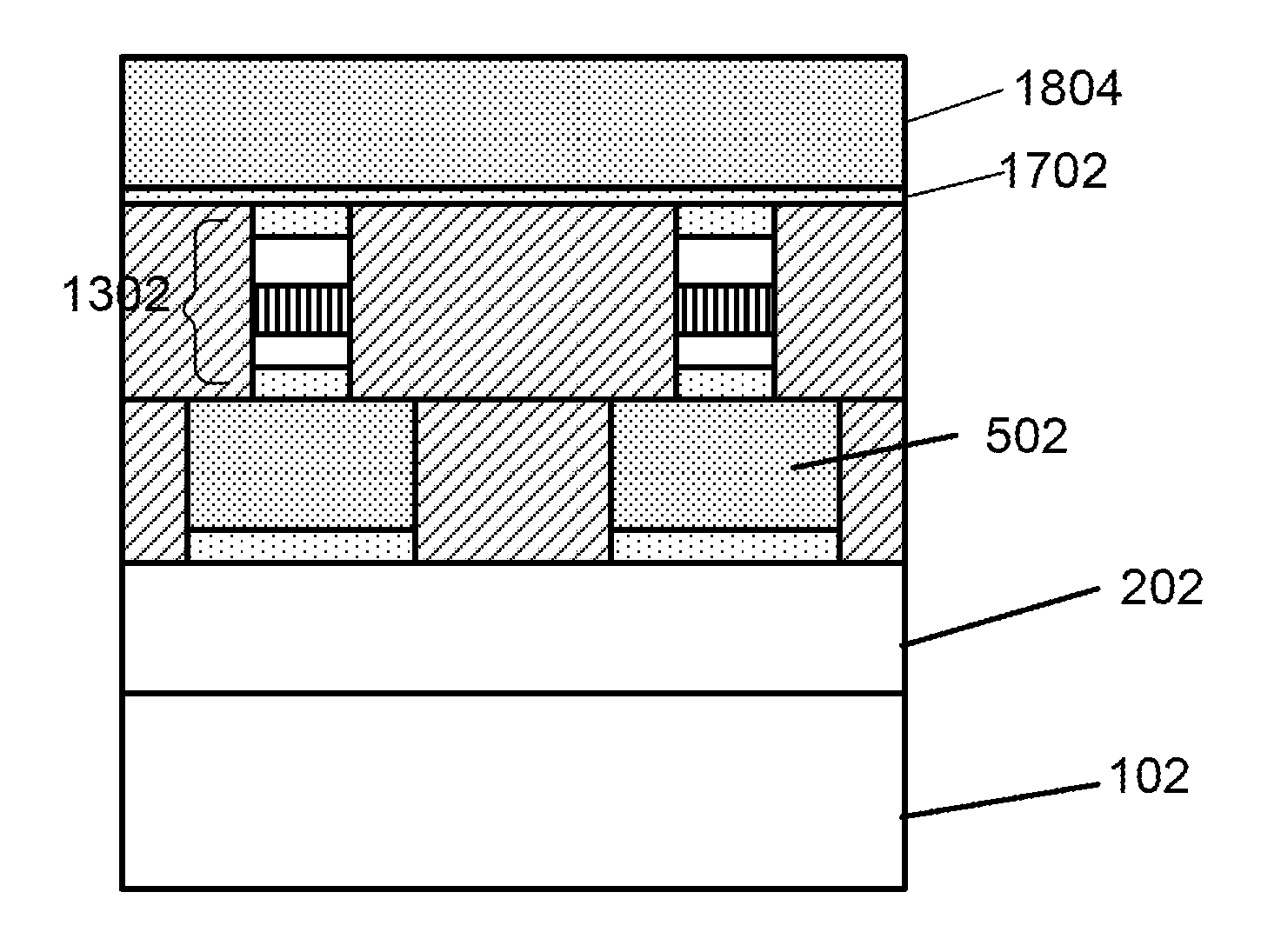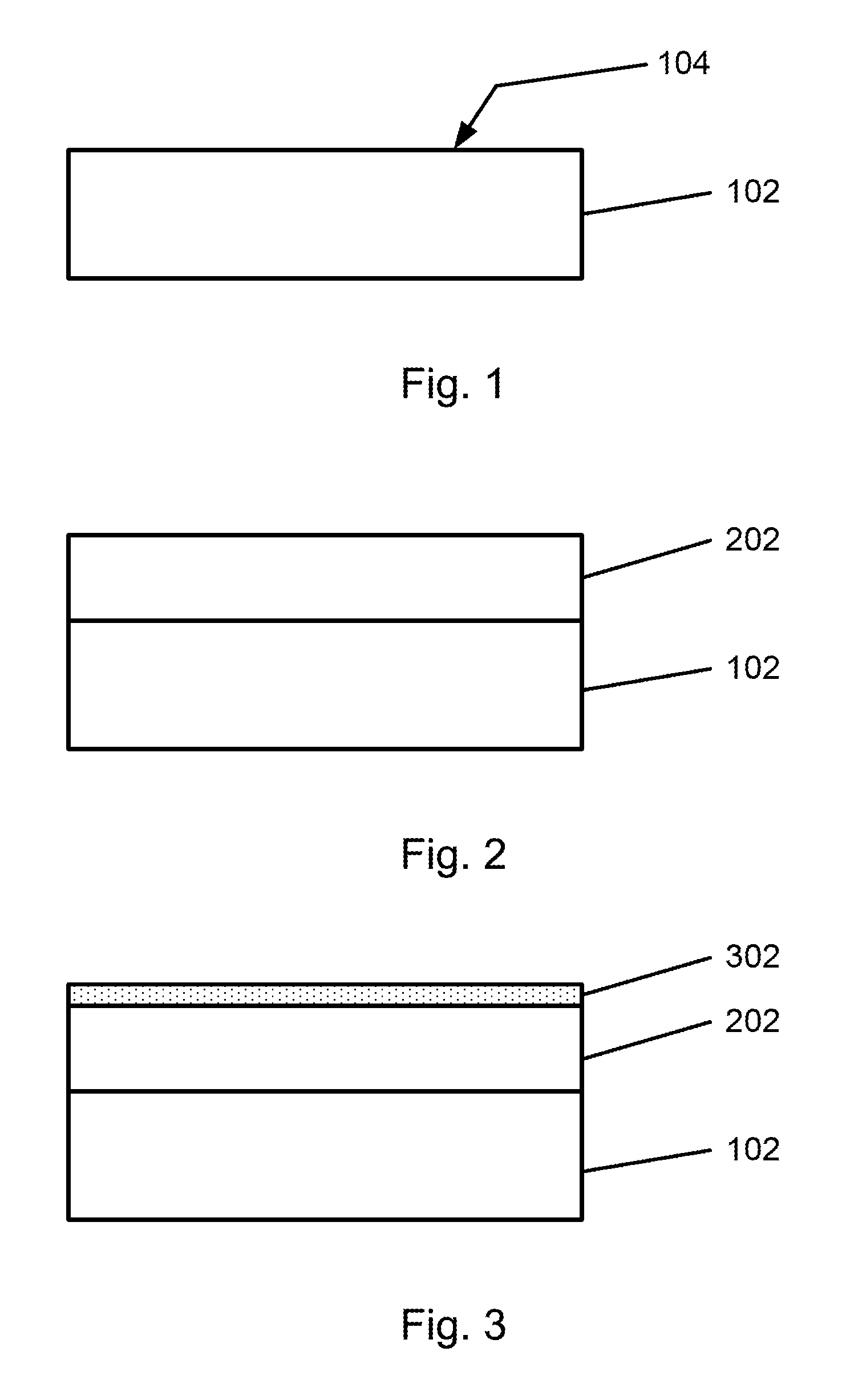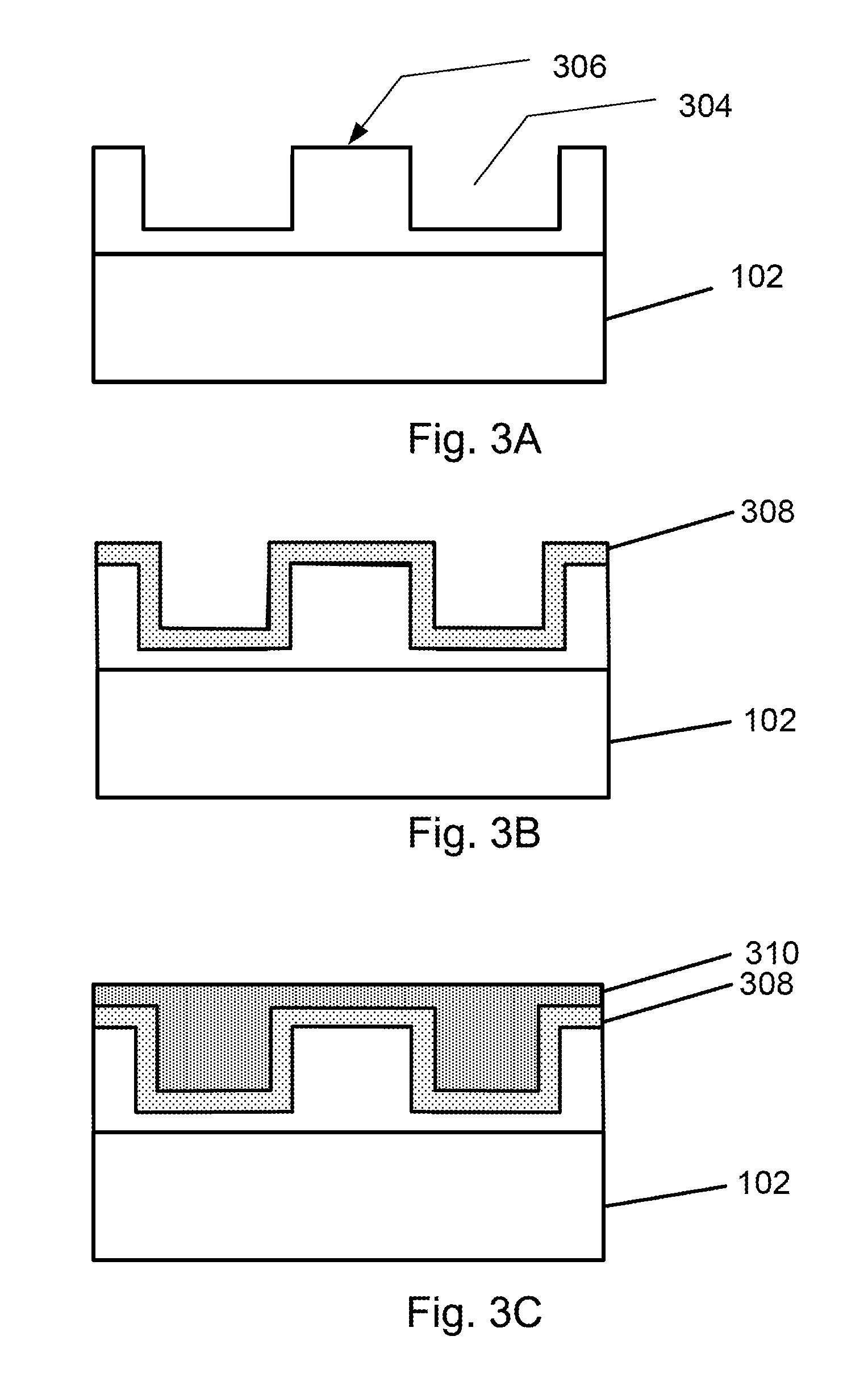Pillar structure for memory device and method
a memory device and pillar structure technology, applied in the field of switching devices, can solve the problems of dielectric breakdown, reduced device size, and inability to operate properly, and achieve the effect of a wide range of application and high density memory
- Summary
- Abstract
- Description
- Claims
- Application Information
AI Technical Summary
Benefits of technology
Problems solved by technology
Method used
Image
Examples
Embodiment Construction
[0010]The present invention is generally related to a switching device. More particularly, embodiments of the present invention provide a structure and a method for forming a plurality of resistive switching devices each having a pillar structure. The present invention has been applied to fabrication of high density non-volatile memory devices. But it should be recognize that embodiments according to the present invention would have a much broader range of applicability.
[0011]FIGS. 1-17 illustrate a method of forming a switching device according to embodiments of the present invention. These diagrams are merely examples and should not unduly limit the claims herein. One skilled in the art would recognize other variations, modifications, and alternatives.
[0012]As shown in FIG. 1, a substrate 102 having a surface region 104 is provided. The substrate can be a semiconductor substrate in a specific embodiment. The semiconductor substrate can be a single crystal silicon wafer, a silicon ...
PUM
 Login to View More
Login to View More Abstract
Description
Claims
Application Information
 Login to View More
Login to View More - R&D
- Intellectual Property
- Life Sciences
- Materials
- Tech Scout
- Unparalleled Data Quality
- Higher Quality Content
- 60% Fewer Hallucinations
Browse by: Latest US Patents, China's latest patents, Technical Efficacy Thesaurus, Application Domain, Technology Topic, Popular Technical Reports.
© 2025 PatSnap. All rights reserved.Legal|Privacy policy|Modern Slavery Act Transparency Statement|Sitemap|About US| Contact US: help@patsnap.com



